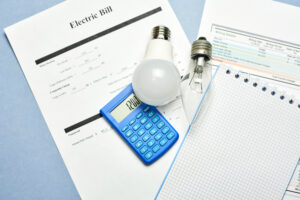When wind power is NOT for you…
There is a real push online right now for renewable energy. In other words, clean energy that the do it yourselfer dreams of. The two types that are the most prevalent are wind and solar power. Both are clean, renewable and can really make a dent in your energy bills when done right.
That’s the key phrase – when done right. The problem is most people a) don’t know how to build effective and efficient systems, b) don’t understand the implications of their decision, and c) don’t know how much power they need to offset their energy bills.
Look, before you beat me over the head, let me just say this: It’s not your fault. The truth is you’ve been beat over the head quite a bit. The mainstream media and even more recently, the internet advertisers have just been relentless in pushing renewable and alternative energy on you.
Heck, even President Obama has made it a point, nay, a cornerstone of his administration.
Here’s the truth. Not everyone can have a wind generator, wind mill, whatever you want to call it, in their yard. In fact, not every neighborhood can have it.
There is a very simple reason – you need wind, a lot of it, to generate wind power that is useful to you.
Okay, you’re thinking. Big deal. I already knew that. But think of the implications here. Most windmills or wind generators require quite a few RPMs to generate 6-12 volts of power. Say 400 RPMs. For many generators thats about a windspeed of 15 mph. So, to steadily charge battery banks at around 12 volts you need a 15 mph breeze.
Okay, so you have that. Next hurdle. Usually to catch this breeze, the blades on your generator need to be about 4 feet for a diameter of 8 feet. For safety reasons, your generator should be far enough above the ground so the swooping blades won’t injure anyone. This usually means 10-15 feet above the ground, at least. The added bonus of this is the higher you go, the more wind there usually is (less resistance from structures).
The downsize is durability. The higher the windmill is from the ground, the less stable it is. In other words, the strong your tower has to be. The best way to overcome this is to mount it to a shed or garage, and utilize the structure as your base. Unfortunately, this can be difficult. Remember, the wind generator should stand straight, and be able to withstand a strong wind. It does no good if it lays broken on the ground. And the higher up your go, th eless stable the unit is.
Also, the blades have to be built and remain perfectly in balance. In other words, they all must be uniform size and equal weight. If not, and you don’t correct it, the shaft of the generator will be ruined because the blades will not spin properly and weight the shaft downward. Once this happens, the generator is finished and must be replaced. Balancing the blades is difficult (but not impossible) and we’ll cover it in a future entry.
Overall, wind power is not suitable for those who live in tight areas, such as heavily urban areas – as there are numerous safety concerns (i.e. what happens if the tower falls). Also, urban areas tend to get less wind than rural areas (more structures block the wind). There might also be an issua with building such a structure (absent of building permits).



wind generators are not very efficient but they are clean sources of energy’;-